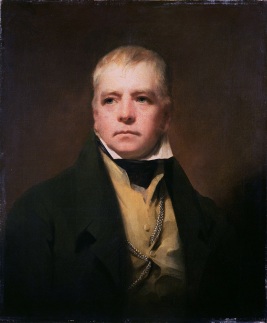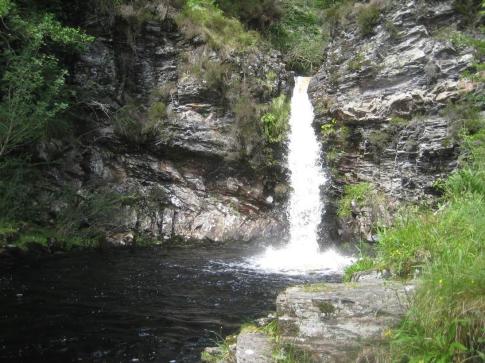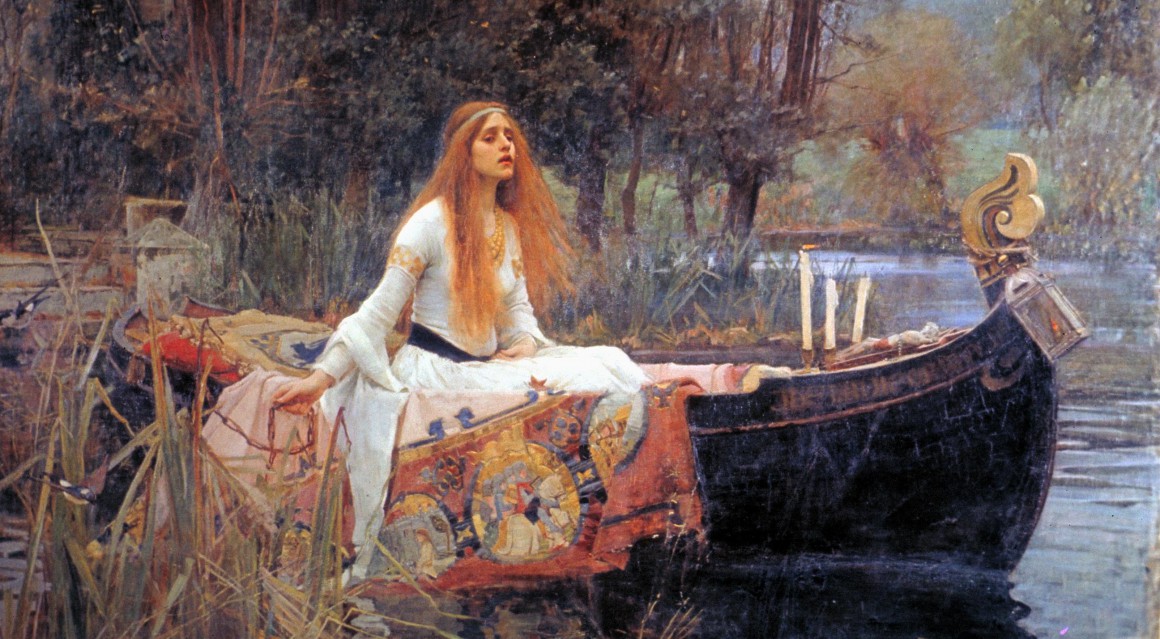
A week spent in Edinburgh pouring over material relating to Scott’s narrative themes and styles has yielded information which I’m hoping to put to good use in my thesis. Right now, I’ve decided to blog about the feature repeatedly discussed by academics- setting. Scott fans clamoured after the majestic and evocative Highland settings conjured by his lavish prose. The descriptions were considered radical at the time- it gave the reader a sense of actually being present at the very scene. Yet there was a psychological element to this treatment of scenery that goes quite unnoticed earlier in the novels, yet becomes more evident as the novel progresses. Waverley is the perfect example of this. Not only does the narrative of the setting serve a visual purpose; it also charts the mental progress and development of the main character Edward Waverley as he grapples with his true identity (Millgate, 38). His time spent at Waverley Honour, Tully Veolan and Glennaquoich are imminently important in his psychological development as a man and discovering his true identity.
The environment of Waverley Honour is fraught with traditional pride and in the case of its young heir apparent, fond indulgence. Sir Everard Waverley and his sister Lady Rachel’s infatuation with their ancestors and the medieval chivalric past is directly inherited by their young nephew, whose education they are responsible for. He is permitted to indulge himself in reading of any kind, completely devoid of restriction. For Edward Waverley, this allows him licence to immerse himself in novels of medieval romance, where the code of chivalry, romantic daring and reckless adventure dominates the narrative- in short, his education is based entirely on his own interests, “so long as it afforded him amusement” (Scott, 14). This mode of education is implied by the author from the beginning to leave the hero of the narrative vulnerable and naive and devoid of “better discipline” which would have equipped him with the ability to make rational choices not based on an “inflamed” imagination (Scott, 14). His wild, roaming imagination is perfectly characterized by his isolated surroundings at Waverley Honour, his “favourite haunt[s]” being the “extensive…forest grounds” or “cliffy and wooded pass” which make up the “savage character” (Scott, 19) of his uncle’s estate. This bold description of an untamed wilderness perfectly characterizes Edward’s yet-untamed imagination. It is the first of several geographical locations that characterize his personal development, but one of the most important, as it is pivotal in embedding an excessive romantic nature into his character which will later lead him into danger on his travels in Scotland.

Glennaquioch displays Waverly’s heightened romantic imaginings at its most wildly impetuous. Probably the most poignant scene is that in the glen, where Waverley listens to Flora’s recitation. There is a method to Flora’s choice of location, which she herself frankly admits, “a Highland song would suffer…were I to produce it without its wild and appropriate accompaniments” (Scott, 118). She purposefully chooses a glen with an appearance of a “sylvan amphitheatre” with a “romantic waterfall…that corresponds with beauty” (Scott, 117). “Mossy banks of turf” complete this scene of “romantic wildness” (Scott, 117). Flora is already aware of Waverley’s romantic disposition; she calculates the impact this will have on him. She is proved correct. Waverley in enamoured with the surroundings-and with her. However, there is a very real danger. Flora is not deceptive in the malicious sense, but rather self-deceptive. The scene in the glen is her effectively acting out her own fantasy of patriotism which she wills with all her heart to come to fruition (Millgate, 49). She is determined to lead a life of romantic extremes, with a brilliantly executed performance from start to finish. Therefore, the faith Waverley places in both her and her brother is effectively a blind faith that falls away towards the novel’s conclusion when he gains a sense of reality. He cannot be as extreme as them- he is an antiquarian, not a martyr of the romantic.
The location of Tully Veolan, the Bradwardine residence, is complex as it encompasses every stage of Waverley’s romantic leanings and eventual disillusionment with its excess. When Waverley initially arrives in Tully Veolan to visit Baron Bradwardine, he immediately assesses it by a gothic and sensationalist standard. He critically deems the turret to be more a “pepper-box” than a “Gothic tower”, and concludes it a “monastic illusion” that suits his “fancy” (Scott, 39). In this chapter we can see how everything that surrounds Waverley passes through the romantic filter of his naive vision, showing a lack of practicality and acceptance of the ordinary. His next visit to Tully Veolan is under very different circumstances-he is there with a warrant for treason hanging around his neck. Kept in an enclosed, dark area, he does not immediately realise he is in Tully Veolan. He is in almost complete darkness, due to his surroundings and also as a consequence of his fever, so he cannot decipher where he is. Kept in his “cage” of a bed (Scott, 359) which is sealed with planks at the side to prevent vision, Waverley’s circumstances are very different to the lively social atmosphere of his former visit. In such circumstances, it is rather a culture shock to learn that his name, that he wore like a badge of honour, is of no use to him (Millgate, 44). Still, his psyche wildly grasps at anything gothic he can glean from his situation. His nurse is a “Highland sibyl”, the young lady (who is actually Rose Bradwardine) who visits him an “angel…guarding…the couch of his sickness” (Scott, 360). It would appear even the charges of treason have not yet given him enough practical perspective. However, his third visit to Tully Veolan finally opens his eyes and give him incentive to act with the practical precision that those around him require. Due to the recent conflict, Tully Veolan is in ruins and Waverley is horrified to find the picturesque place he so loved falling away to nothing. However, it is the unwavering kindness which Baron Bradwardine shows him upon this third visit that steels him with righteous determination to put events to rights (Millgate, 46). This newfound sense of moral purpose signifies the conclusion of Waverley’s personal progression- Tully Veolan is a symbol of him coming full circle from naive inexperience to mature understanding.
Such is Waverley’s education, an education mapped by each place he has resided. Each place had its own trials and lessons which Waverley endures and matures psychologically as a result. Thus the novel concludes with a certainty of who he is and where his place in the world ought to be.
Works Cited
Scott, Walter. Waverley Or Tis Sixty Years Since. Oxford: University Press, 2015.
Millgate, Jane. Walter Scott The Making Of A Novelist. Edinburgh: University Press, 1984.
Walter Scott Image. Google Images. <http://en.wikipedia.org/wiki/Walter_Scott>
Waterfall Image. Google Images. <http://http://www.wildswimming.co.uk/map/grey-mares-tail-burn-galloway-forest-park/>

![Screenshot_2016-03-16-18-53-46-1-1[1]](https://rfitzgeraldsite.files.wordpress.com/2016/03/screenshot_2016-03-16-18-53-46-1-11.png?w=332&h=318)
![Screenshot_2016-03-16-19-06-57-2-1[1]](https://rfitzgeraldsite.files.wordpress.com/2016/03/screenshot_2016-03-16-19-06-57-2-11.png?w=364&h=136)
![Screenshot_2016-03-16-19-16-20[1]](https://rfitzgeraldsite.files.wordpress.com/2016/03/screenshot_2016-03-16-19-16-201.png?w=254&h=452)
![Screenshot_2016-03-16-18-58-17-1[1]](https://rfitzgeraldsite.files.wordpress.com/2016/03/screenshot_2016-03-16-18-58-17-11.png?w=487&h=269)